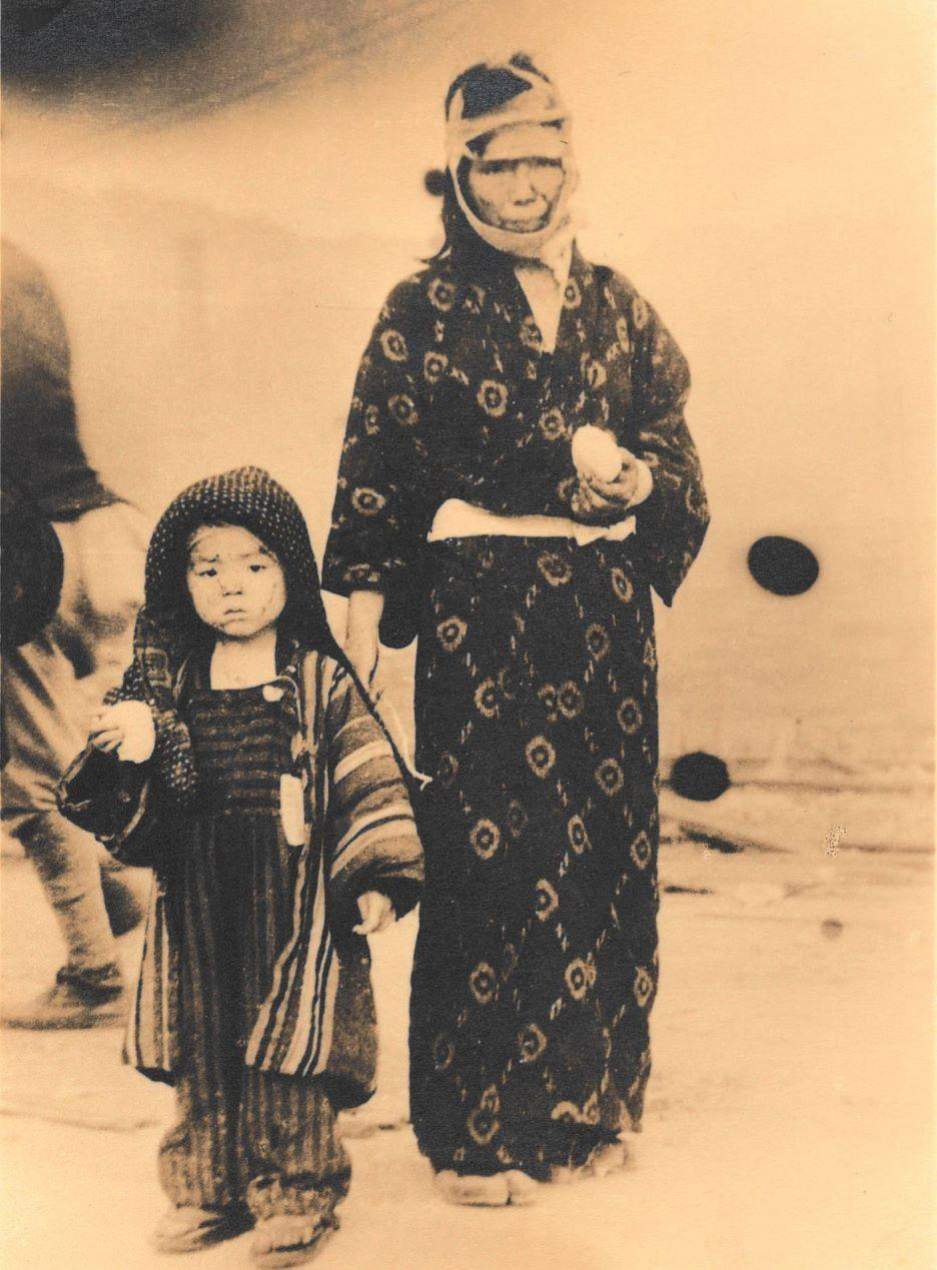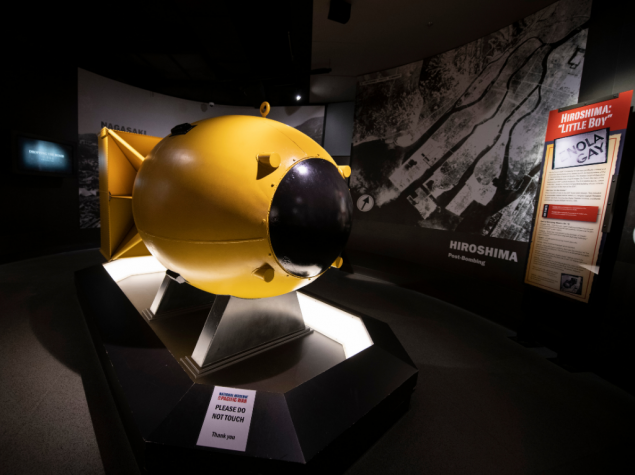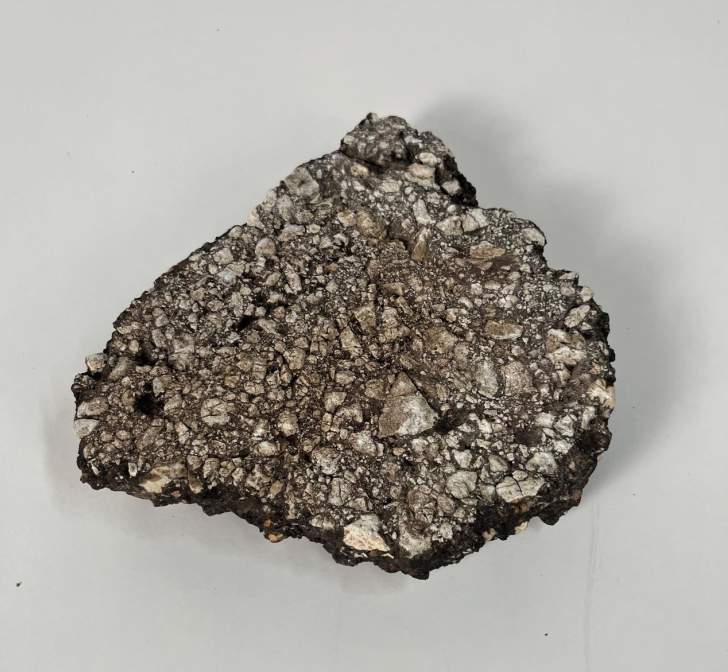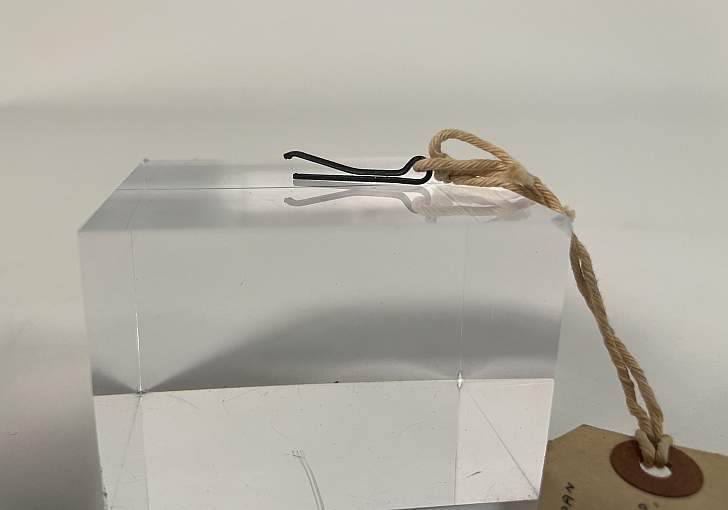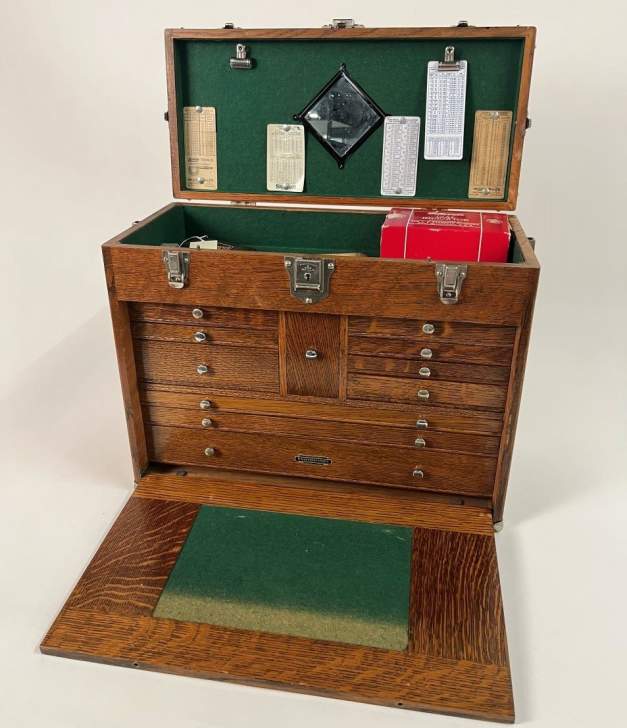Photograph of a mother and child injured from the bombing of Nagasaki. The photograph was taken by Japanese Army photographer Yosuke Yamahata on 10 August 1945, when he was dispatched to Nagasaki to record the damage from the bomb. Although some people survived the initial bombings, even those who were not visibly wounded quickly became sick. The effects of radiation were still unknown, and Japanese doctors were confused when survivors of the bombings became ill days after the event. Many died soon after, but others continued to live with radiation sickness for years or even decades.
The Fallout: Photo of Mother and Child
This section details the political, social, and medical aftermath of the atomic bombs.
Overview
Survivors from Hiroshima managed to make it to other cities, including Nagasaki, to warn them of the terrible American weapon. When the next bomb fell three days later, Japan was still horrified. Thousands died instantly in both explosions, and even more became ill or died from radiation exposure. Word spread quickly, not only in Japan but across the globe. News reports told the world of America’s new destructive capability.

Photograph of Hiroshima after Atomic Bomb. US Strategic Bombing Survey Photo from the National Archives.
The use of the atomic bomb forced talk of surrender in Japan. Coups broke out as the people discovered the plan to accept the Potsdam Declaration. Assassinations took place in Tokyo trying to prevent it. These efforts failed. None of them worked. On 14 August 1945, Emperor Hirohito broadcast a message to his people, announcing Japan’s surrender. The war was over.
We have ordered our government to communicate to the governments of the United States, Great Britain, China, and the Soviet Union that our empire accepts the provisions of their Joint Declaration.
Japanese Emperor Hirohito, as part of the surrender speech, known as the "Jewel Voice Broadcast"
After the war, the bomb continued to impact people’s lives. Hundreds of Japanese lived with medical problems from the nuclear radiation for decades. The development of the atomic bomb also had huge impacts on science. Hundreds of other patents were made through the Manhattan Project. This led to developments in other fields, enabling the technological advancements of the 21st century.
Photo of Mother and Child
Exhibit Preview
The Atomic Bomb Exhibit
This exhibit tells the story of the atomic bomb from the development stages to the effects of the bombings on Hiroshima and Nagasaki in August 1945....

